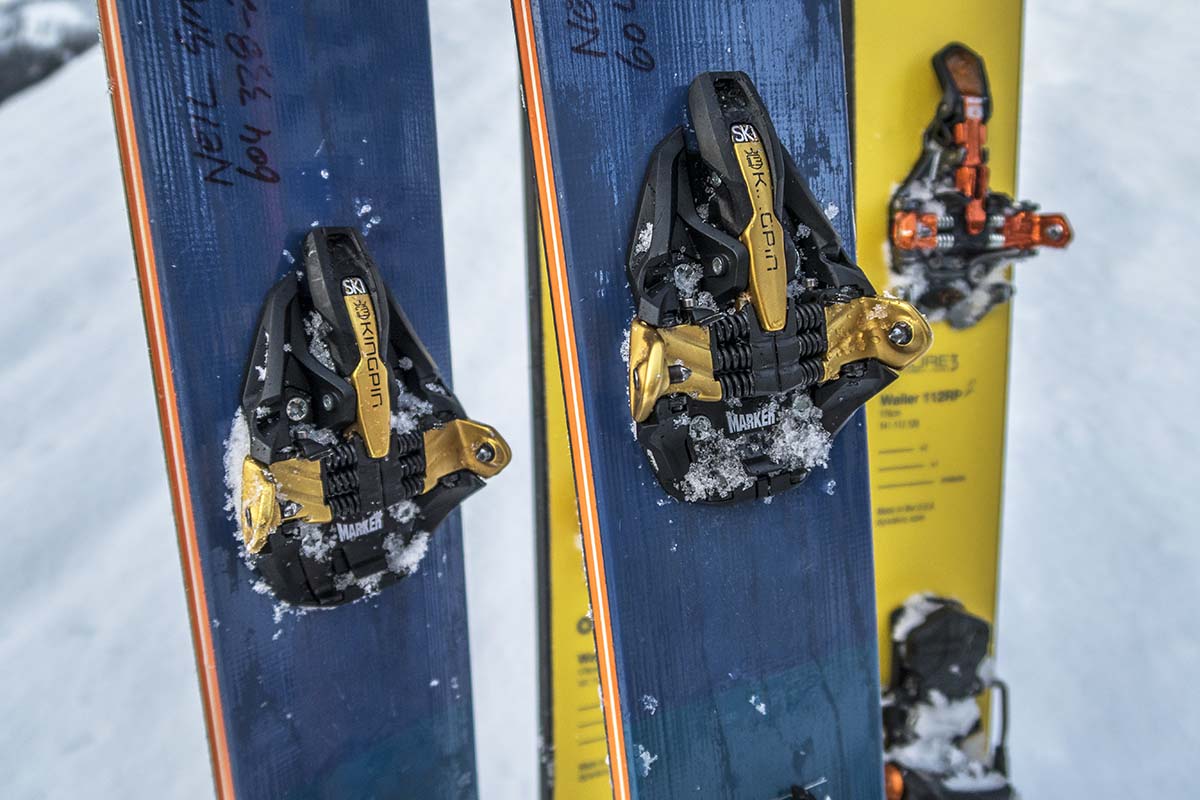
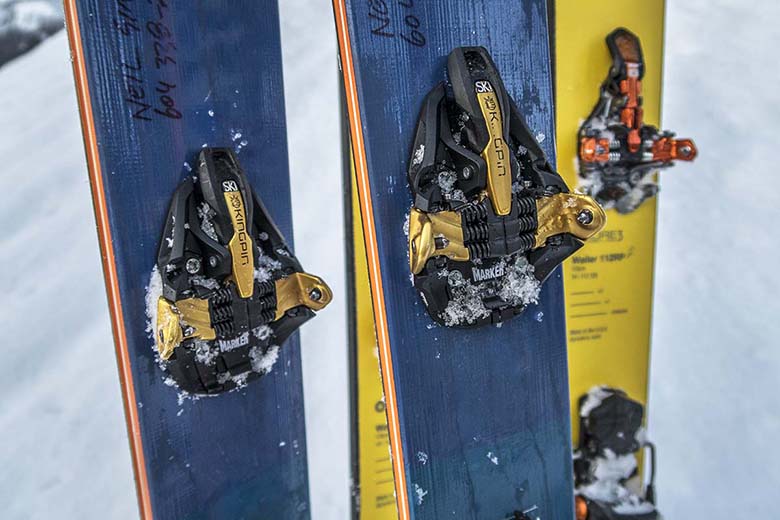
Switchback Travel


Switchback Travel
Backcountry ski bindings are a lot different than your typical resort setup, and there are three different types: tech, frame, and hybrid. No matter which style you choose, you can tour to places where crowds are virtually non-existent and snow is untouched. Before settling on a binding, it’s important to take into consideration what type of skier you are, how you like to travel in the mountains, your ski objectives, and your budget. Here, we break down everything you need to know about different ski binding types, and if you're looking for product recommendations, see our article on the best backcountry ski bindings.
Editor's note: This article was updated on August 25, 2025, to ensure all information was accurate at the time of publishing, and to update products to reflect 2025/26 ski season models.
Many seasoned backcountry skiers decide that the ability to travel fast and light through the mountains with less weight on each foot is a high priority. Some ski destinations, such as the Tetons in Wyoming or the Valhallas in British Columbia, have long, steep approaches before reaching the highly sought-after terrain. A lighter pair of bindings will help you conserve energy on the uphill and afford you more laps.
.jpg)
A traditional tech binding has four metal prongs (two at the toe and two at the heel) that insert into metal holes and slats on backcountry ski boots. To transition into walk/touring mode, the heel of a tech binding rotates so that the toe can stay attached while the heel of the boot remains free to allow for a natural gait as you travel uphill. In general, tech bindings are relatively light and easy to use, making transitions from ski to walk mode—and back again—quick and seamless.
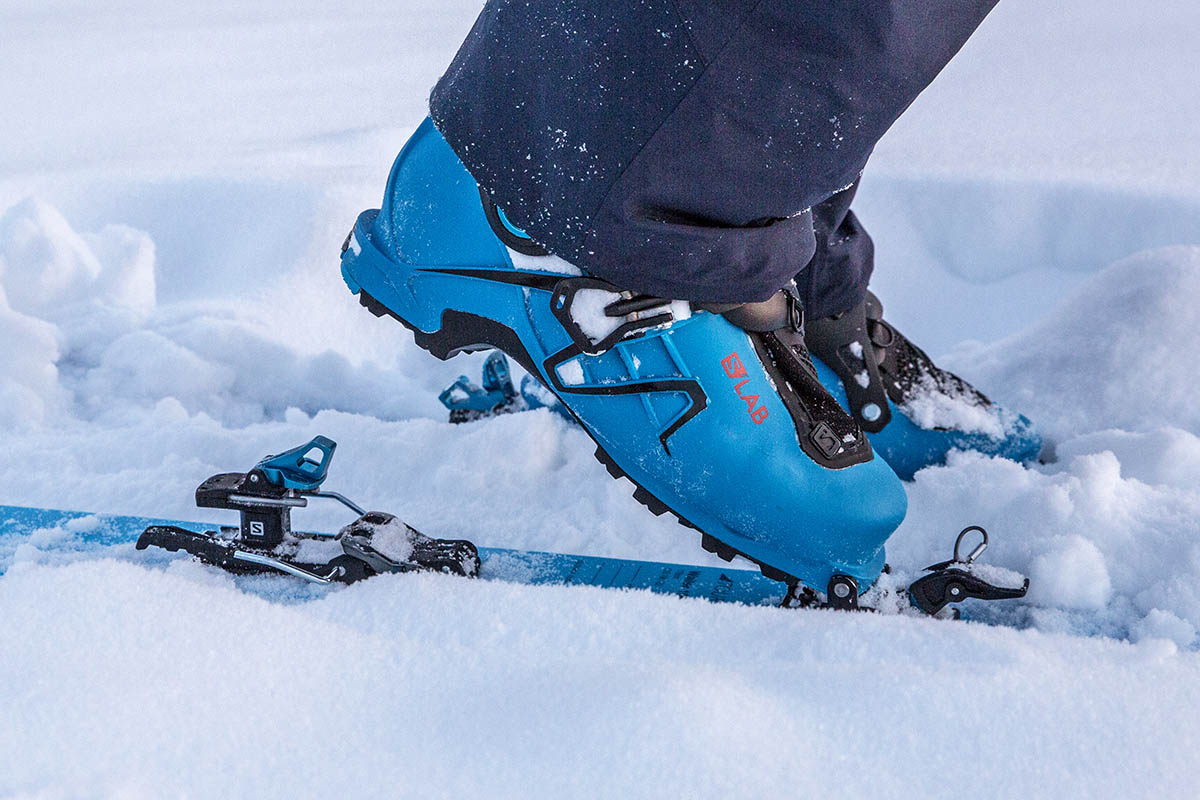
One of the main benefits of a modern tech binding is its low weight. For example, a lightweight design like the Salomon MTN Pure Alpine Touring Binding weighs about 1.5 pounds per pair. Compare that to the lightest hybrid model on our list of the best backcountry ski bindings, the Salomon S/Lab Shift 2 MN at nearly 4 pounds, and it’s clear why uphill-focused touring fans love tech bindings—the weight savings can make a big difference on the legs throughout the day. For ski mountaineers, tech bindings can get even more lightweight, with some foregoing brakes to shave critical ounces. The Dynafit Superlite 150, for instance, weighs a feathery 10.6 ounces, and their Mezzalama is even lighter at a scant 9.4 ounces. Skinning up snowy slopes for hours on end can feel like a relative breeze after switching to one of these ultralight models.
.jpg)
Companies like ATK Bindings, Dynafit, G3, Salomon, and others have designed tech bindings that prioritize easy and fast transitions. Most experienced backcountry skiers can change from walk to ski mode and click in, ready to ride, without ever actually stepping out of their bindings. This whole process can take as little as 10 seconds, and all it requires is a rotation of the binding heel. While standing on an exposed ridgeline with howling winds, how fast you can switch to ski mode and start descending makes a difference in comfort and morale. For ski mountaineers attempting long traverses, these saved seconds quickly add up, resulting in more mileage per day. A frame binding, on the other hand, can be slower to transition, which often leaves a tech binding user waiting in the cold for his or her friend.
.jpg)
The low weight and smooth walkability of tech bindings do come with sacrifices, most notably on the downhill. With only four small metal pins keeping each boot attached to the binding, smaller forces can more easily cause these bindings to release prematurely. In fact, many skiers have experienced popping out of their tech bindings while skiing groomers at the resort or navigating very firm or chunky snow. To combat this, some people will pull the small toe tab into the “lock” position (do so at your own risk), which keeps the boot toe securely locked with little elasticity for releasing. Unfortunately, this elasticity is what allows a binding to release when needed, like when a skier falls or twists a knee.
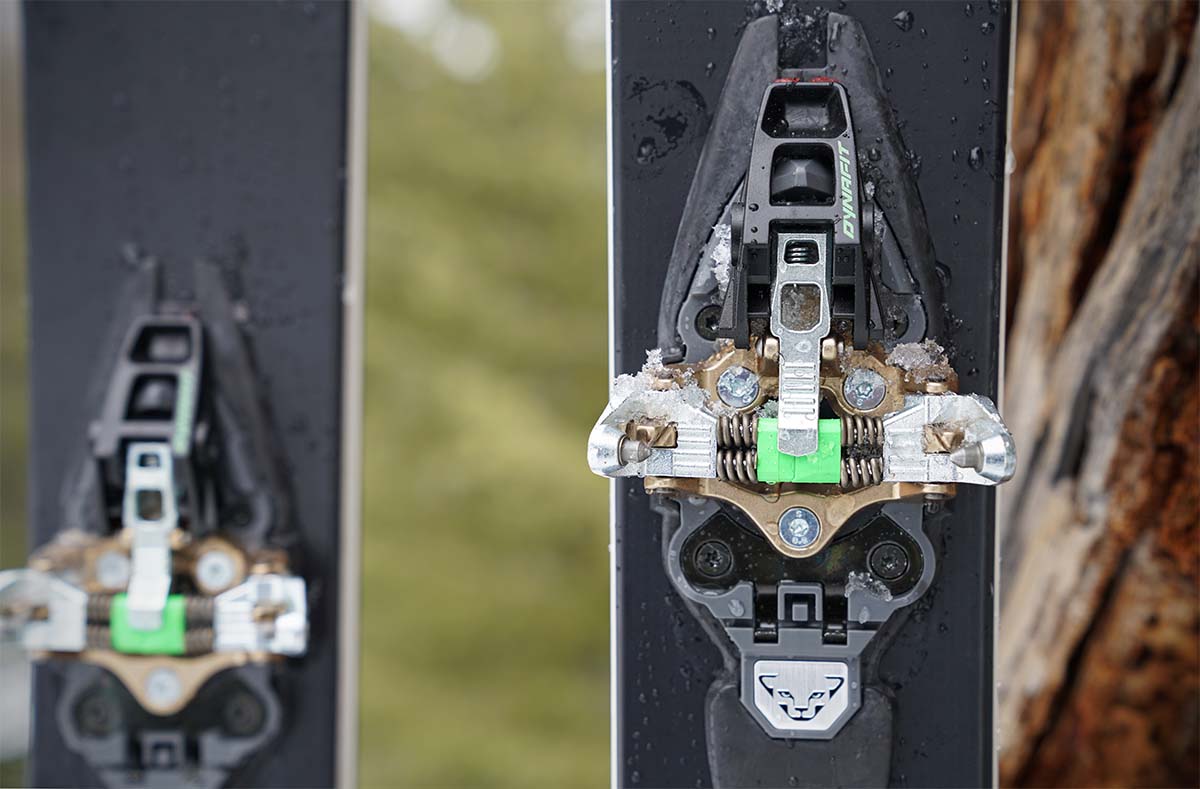
Another drawback with tech bindings is reduced security. To better illustrate this point, “DIN” is a certification given to frame bindings and some tech bindings that describes their releasability. Alpine and frame AT bindings are certified ISO 9462:2023, which guarantees a safer binding and release. Tech bindings (but not all tech bindings) have their own DIN certification, which is recognized as ISO 13992:2014. Finding a tech binding with DIN values inspires a bit more confidence, but the certification is not the same as the system used for frame or alpine bindings. All of this said, tech bindings are great for skiing soft snow, which is how most of us ski in the backcountry anyway. While carving on groomers, hitting jumps, or skiing variable snow at speed, it’s often worth opting for a frame-style binding, though modern tech models have made substantial inroads in recent years.
_0.jpg)
If you decide that tech is the style for you, it’s worth planning ahead and purchasing a pair of backcountry ski boots that will be compatible with the pin toe and heel. Classic alpine ski boots will not work with a tech binding, as they are not manufactured with the metal holes and grooves needed to lock the pins in place. And because a backcountry-specific boot may or may not work with a frame binding, having one pair of boots for all of your skiing endeavors often becomes a complicated pursuit, though it's gotten a bit easier in recent years with innovations like GripWalk.
With more skiers spending time both on and off piste, manufacturers are now designing boots that can work with both tech and frame bindings. This is a very complicated topic, and we recommend contacting the binding manufacturer or chatting with your local gear shop staff to double-check compatibility before making a purchase. The good news is that any pair of boots labeled as “alpine touring” will work with tech bindings, no matter who makes them. As long as you’re committed to putting together a backcountry-specific setup, your job should be relatively easy and straightforward.
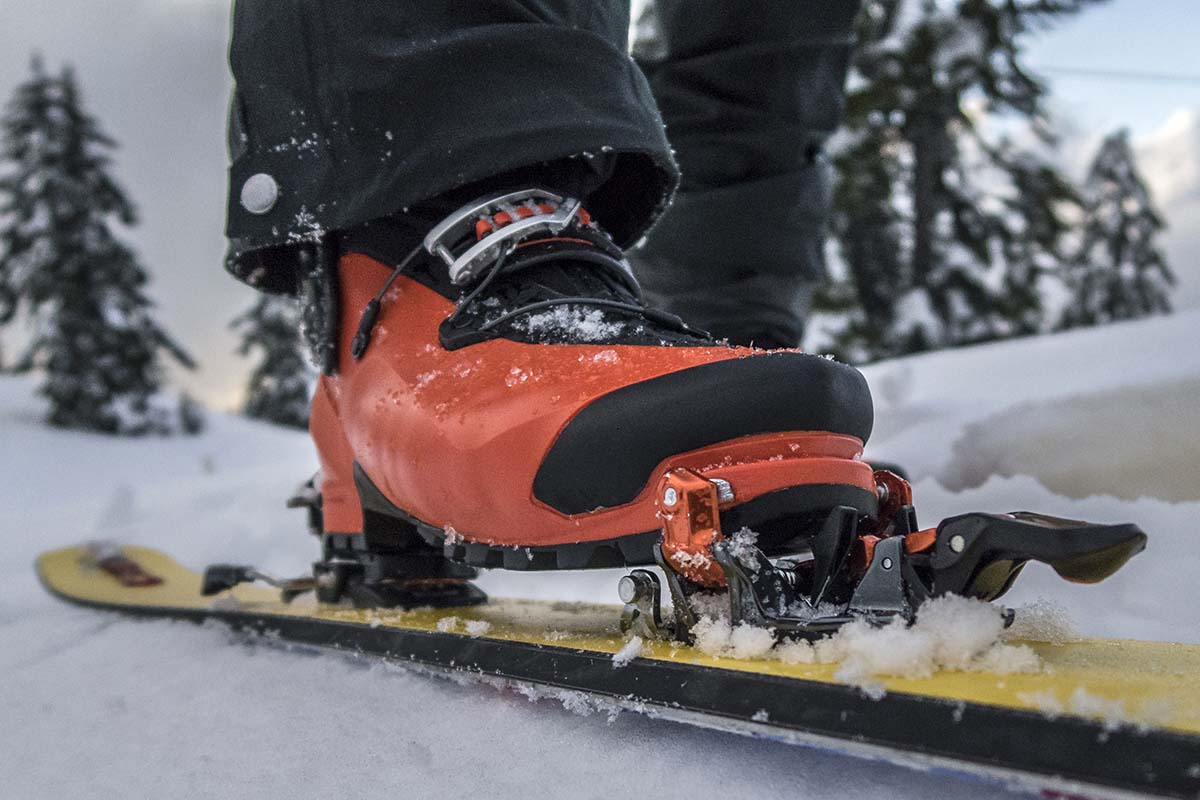
Some skiers are not ready to give up their season pass and love the ease of chairlift access while occasionally opting for a human-powered day in the backcountry. If this sounds like you, a frame binding might be your best bet. This binding style can handle hardpack, chunder, big jumps at the park, powder, and everything in between while still offering the ability to tour up a skin track. Frame bindings also are the cheapest of the touring options, which always is nice. That said, the weight and clunky feel of frame bindings make longer days in the backcountry tiresome, and you may end up being jealous of your ski partner who opted for tech bindings.
_0.jpg)
Many new backcountry riders still use frame AT bindings as their first touring setup—this style is so similar to the alpine bindings they're used to and typically much cheaper than tech or hybrid alternatives. However, when you go for your first full-day ski tour in frame bindings, you'll start to understand the allure of tech bindings. The added weight of frame bindings takes its toll after any substantial amount of time spent on the skin track. Additionally, because a frame binding stays attached to your boot while you walk, the motion can feel quite clunky and not nearly as natural as using a tech binding, especially when climbing steep slopes and sidehilling. Finally, there's less play and flexibility in the ski since the binding is mounted with a stiff rail, which can make walking feel quite strenuous. Overall, a frame binding is a good option for those who prioritize downhill shredding and plan to spend more days at the resort than in the backcountry. However, weight is the price you pay for the dual functionality, and as a result, we don’t recommend them for longer tours. For covering ground in the backcountry and long ascents, frame bindings lack the smooth, lightweight feel of tech bindings.
_0.jpg)
Since frame bindings essentially are alpine bindings that allow you to tour uphill, they are fairly simple to use. A plate under your foot, parallel to the ski, holds the toe and heel piece together while allowing the heel to pivot so you can travel up the skin track. When you’re ready to ski down, you pull a lever mid-binding that locks the frame into place on the ski, allowing it to perform exactly like an alpine binding. As we mentioned, frame bindings tend to be slightly slower to transition compared to tech bindings, and they can also ice up more easily.
Like an alpine binding, most frame AT bindings are certified with the standard alpine DIN, allowing a skier to lower or raise the release value depending on experience level and body weight. This makes for a much safer descent. On a similar note, because of the beefy structure of this type of binding, you are much less likely to pre-release than you would while using a tech binding. All of this means that a frame binding will release when you need it to (when you take a fall) and should stay locked and secure when you really want it to, even while skiing aggressively. For this reason, skiers who want one setup for the resort and the backcountry often lean toward a frame binding for its security in ski mode and its ability to switch into tour mode.
.jpg)
Another advantage of frame bindings is that they can accommodate a wider range of ski boots. Most alpine touring bindings are able to handle either standard downhill boots or touring boots that have rockered soles. But that doesn’t mean you can take any old boot out and convert your setup from alpine to AT with a simple binding swap—you still need the added mobility and range of motion of a boot that’s been designed for backcountry use (i.e., one with walk mode). That said, you can wear your old resort boots for days spent inbounds but use a compatible backcountry ski boot for sidecountry play. Not all backcountry-specific boots will work with frame bindings (boots with MNC or WTR ratings are a safe bet), so again, it's worth double-checking with the boot manufacturer.
Big-mountain skiers wanting a binding that allows for aggressive skiing while maintaining the low weight of a tech binding may have thought that there was no solution—until recently. Not quite as light as a true tech binding, hybrid models are still pounds lighter than the average AT frame binding. And perhaps more importantly, they offer a downhill feel with great holding power that is closer to a frame binding. Companies like Marker and Fritschi spearheaded the hybrid movement by developing bindings with a pin toe and frame heel. The pin toe allows for the same walkability that a tech binding offers, while the frame heel keeps your ski boot locked in more effectively. All in all, if you split your time between the resort and backcountry, a hybrid design could be the perfect match.
.jpg)
In 2018, Salomon went a step further by releasing their S/Lab Shift MN, the first tech binding to provide legitimate performance and safety while bombing laps at the resort (the closest option previously was the unique Cast Freetour Kit). The key ingredient is the toe piece, which functions like other pin-ready setups for uphill travel but converts into a traditional downhill toe design once you’re in ski mode. This gives the Shift impressive versatility: You can wear your downhill boots and put down the power in hardpack and crud or go lightweight with your touring setup on backcountry adventures. After putting the Shift through multiple years of use, we’ve been truly impressed by its do-everything abilities both in and out of bounds. A couple years later, Marker introduced their similarly intentioned Duke PT, which functions nearly the same but has a fully removable toe piece and is heavier by around 2 pounds per pair.
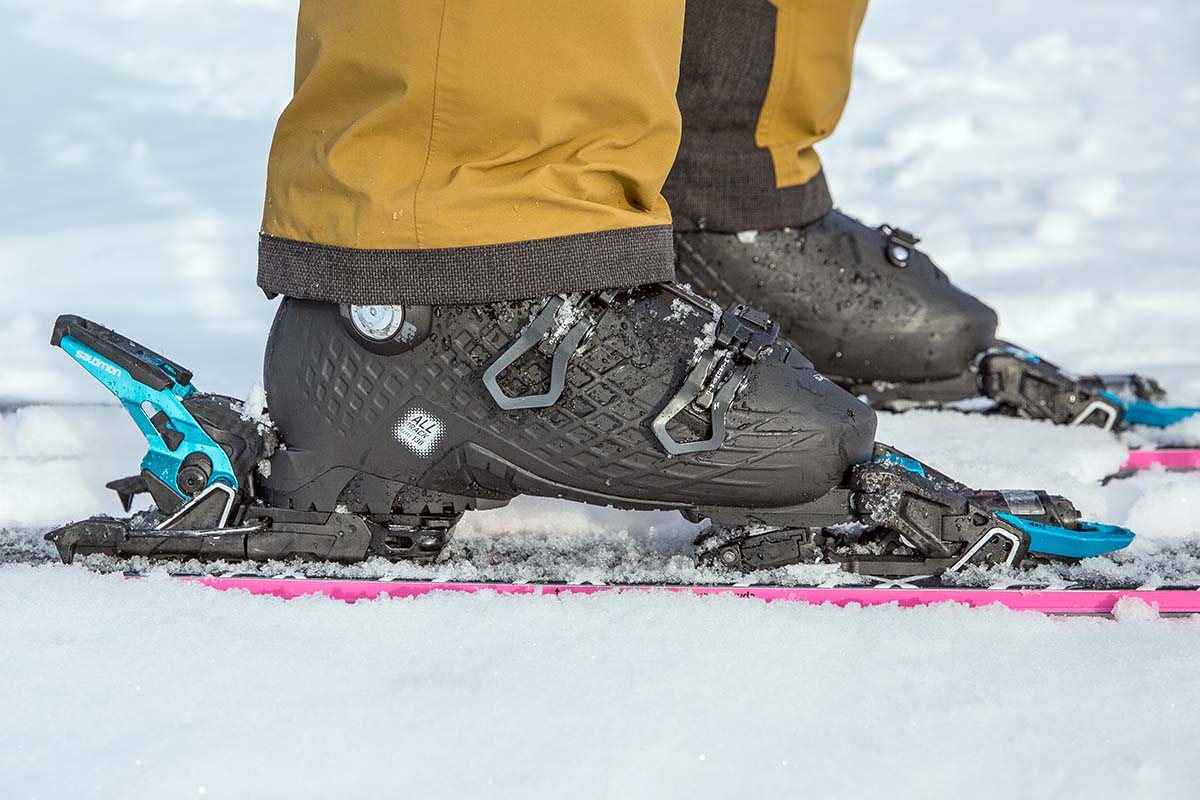
A pair of hybrid bindings cuts significant weight compared to frame bindings. For example, the aforementioned Salomon Shift checks in at 4 pounds 0.9 ounces per pair, while a "lightweight" frame binding like Tyrolia’s Ambition 12 tips the scales at 4 pounds 5.8 ounces, although you lose some stability and power on the descent (one of the reasons many backcountry-goers choose frame bindings in the first place). The main takeaway here: With the drop in weight from a frame binding but more stability, security, and better downhill performance than a tech binding, these hybrids could be the perfect compromise. That said, there still is no binding on the market lighter than a true tech binding. Despite all the hype, the Salomon Shift still weighs a pound more than our heaviest tech binding thanks to its two-mode toe piece and beefy heel. If saving weight for long, intense days of uphill slogging in the mountains is the goal, there's still nothing that beats a classic tech binding.
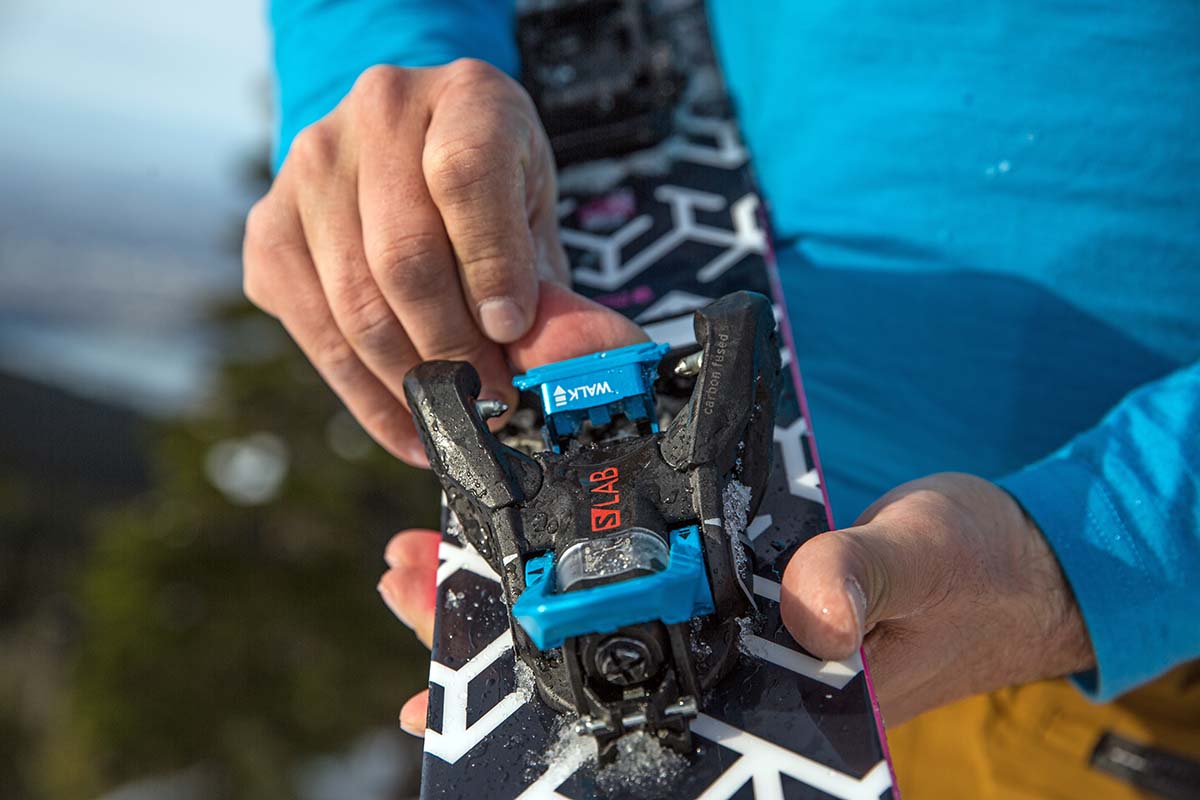
One of our favorite benefits of these hybrid bindings is the security we feel on the descent. With a frame binding, similar to our alpine setup, we have a bit more confidence that they will keep us locked in when we take a fall or charge over rough, bumpy terrain. For downhill-focused skiers looking for more stability and power and who don’t mind the added weight, a hybrid makes a great choice. However, in terms of releasability, bindings like the Marker Kingpin 13 only have the tech DIN certification—a standard that doesn’t quite come close to that of a frame DIN. With this in mind, we feel slightly hesitant to use these as aggressively as frame bindings. The hybrid Salomon S/Lab Shift MNC and Marker Duke PT, however, are certified with the alpine DIN. This is an incredible step in the world of safe and secure tech bindings and one of the reasons they’re two of our favorite backcountry options this season.
_0.jpg)
Unfortunately, not all hybrid bindings offer the same level of boot compatibility, which can create some challenges in pairing them. Any boot used with a “pin toe, frame heel” binding must be a touring-specific model (alpine boots do not have the metal holes at the toe for the pins to latch into). The Salomon S/Lab Shift MNC and Marker Duke PT will work with most boot sole types provided they have full heel and toe lugs. The good news is that most boot manufacturers have options that cross over well for both resort and backcountry use, with tech fittings and soles suitable for alpine bindings, although they tend to be significantly heavier than backcountry-specific models. Regardless of which route you go, we recommend doing extra research on the boot and binding setup you’re eyeing to confirm the two are compatible.
Backcountry riders come in all shapes and sizes, and there's no one-size-fits-all option when it comes to choosing an ideal setup—factors like ability, terrain preferences, and ski objectives all come into play and will affect which style is best for you. Below are our top options for the year that cover several categories, from budget to ultralight. For a wider look at the market, including detailed buying advice to help you choose the right binding for your needs, see our full article on the best backcountry ski bindings.
Best Overall: Salomon MTN Pure
Best Budget: Tyrolia Ambition 10
Best Hybrid Resort/Backcountry: Salomon S/Lab Shift MNC
Best Ultralight: Dynafit Superlite 150
Best Skimo Race Binding: Dynafit DNA Binding
Back to Our Ski Binding Guide See Our Ski Gear Reviews